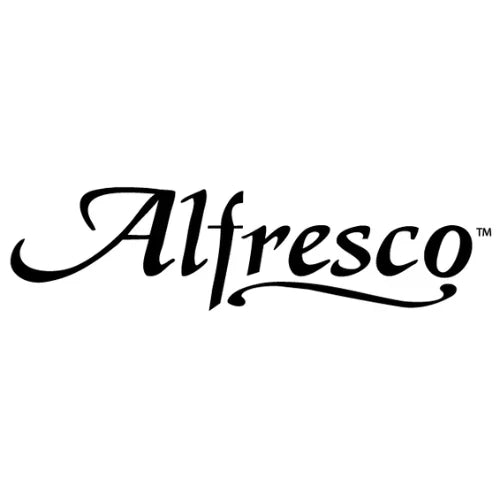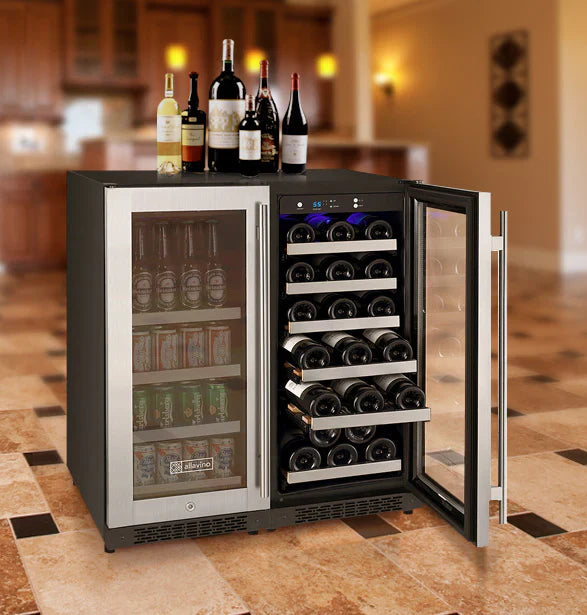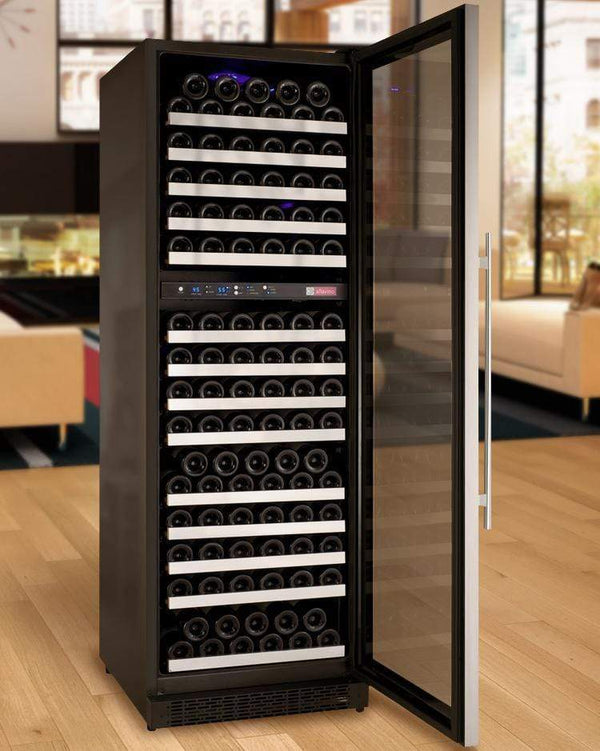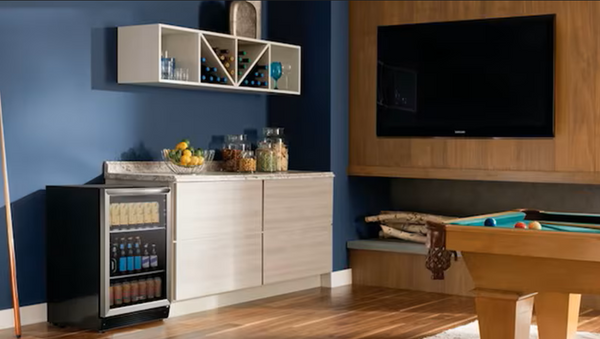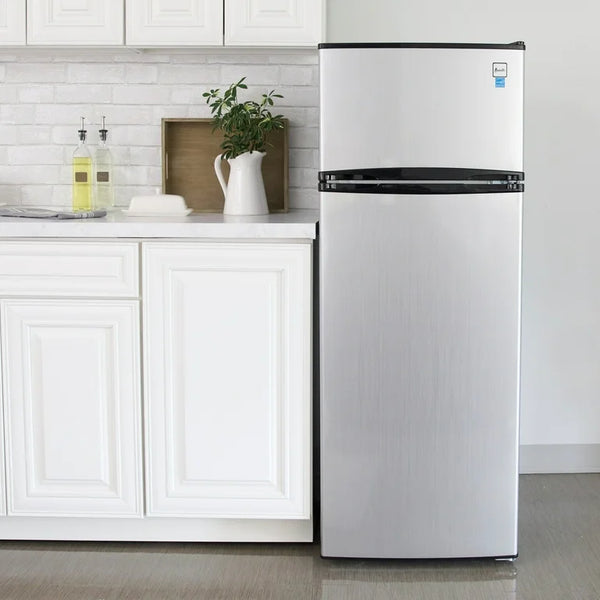Designing a Wine Cellar?
Let’s get it right.
Our specialists review your room layout, insulation, and heat load to recommend the correct cooling system for stable temperature and reliable climate control.
Wine Cooling and Serving Guide: Unlock the Best in Every Bottle
Unlock Perfect Wine Enjoyment: Why Temperature Matters
By Jim Hopper, Wine Cooling Expert
Wine is more than a drink—it’s an experience shaped by countless factors, none more important than temperature. Whether you’re a casual sipper or a dedicated collector, knowing how to properly store and serve wine can dramatically enhance its flavors, aromas, and your overall enjoyment. This guide will walk you through everything you need to know about wine cooling and serving, so every bottle you open is at its very best.
Why Temperature Matters for Wine
Have you ever tasted a red wine that seemed flat or a white wine that lacked aroma? Chances are, temperature played a role. Serving and storing wine at the right temperature preserves its character and unlocks the nuances intended by the winemaker. Just as you wouldn’t enjoy lukewarm lemonade or warm beer, wine needs the right environment to shine.

Storage vs. Serving Temperature: What’s the Difference?
It’s easy to confuse storage and serving temperatures, but they serve different purposes:
- Storage temperature protects wine over time, preventing spoilage and premature aging.
- Serving temperature brings out the wine’s best qualities in the glass, enhancing taste and aroma.
Key Point: Wines are typically stored at a steady, cool temperature, but the ideal serving temperature varies by wine style and varietal.
Ideal Wine Storage Conditions
Proper storage is the foundation of great wine. Here’s how to keep your bottles in peak condition:
Optimal Storage Temperature:
- Most wines: 45–65°F (7–18°C); 55°F (13°C) is ideal for long-term storage.
- Keep the temperature consistent—fluctuations can damage wine.
Humidity:
- Aim for 60–70% to keep corks moist and prevent oxidation.
Light:
- Store wine in darkness. UV light can degrade flavors and colors.
Vibration:
- Avoid frequent movement. Vibration disturbs the aging process and can unsettle sediment.
Storage Solutions:
- Wine fridge or cooler: Best for precise temperature and humidity control.
- Wine racks in a cool, dark place: Good for short-term storage.
- Avoid: Kitchens, garages, or sunny spots—these environments are often too warm or variable.
Pro Tip: Lay bottles with corks on their sides to keep the cork moist and airtight.

Looking to upgrade your storage? Explore our reviews of the best wine cellar cooling units for beginners or discover 6 through-the-wall wine cellar cooling units for serious collectors.
Serving Wine at the Right Temperature
Serving wine at its ideal temperature allows its flavors and aromas to shine. Here’s a quick reference for popular wine styles and varietals:
| Wine Type | Recommended Serving Temperature |
|---|---|
| Sparkling Wine & Champagne | 40–46°F (4–8°C) |
| Prosecco | 43°F (6°C) |
| Vintage Champagne | 45°F (7°C) |
| Light-Bodied White (e.g. Riesling, Sauvignon Blanc, Pinot Grigio) | 44–50°F (7–10°C) |
| Full-Bodied White (e.g. Chardonnay, Viognier) | 50–55°F (10–13°C) |
| Rosé | 48–53°F (9–12°C) |
| Light/Medium-Bodied Red (e.g. Pinot Noir, Gamay, Chianti) | 55–60°F (13–15°C) |
| Full-Bodied Red (e.g. Cabernet Sauvignon, Merlot, Syrah/Shiraz, Bordeaux) | 60–65°F (15–18°C) |
| Dessert Wine (e.g. Sauternes, Ice Wine) | 50–54°F (10–12°C) |
| Fortified Wine (e.g. Tawny Port, Sherry, Madeira) | 55–64°F (13–18°C) |
For a detailed look at the science behind serving temperatures, check our comprehensive temperature guide. Did you know? Even royalty loves sparkling wine! Read about Queen Elizabeth II’s own sparkling wine.
Quick Guide:
- Lighter wines (sparkling, rosé, light whites) taste best colder.
- Fuller, richer wines (full-bodied whites, reds) shine a bit warmer.
For more details on how to serve bubbly at its best, see our guide to the best temperature for Champagne.
Practical Tips for Achieving the Perfect Serving Temperature
Getting your wine to the right temperature doesn’t have to be complicated. Here’s how:
Chilling Wine:
- Refrigerator: 2–3 hours for whites/rosés, 30–45 minutes for reds.
- Freezer: 15–30 minutes for a quick chill (set a timer to avoid freezing).
- Ice bucket: 15–20 minutes for fast chilling—fill with equal parts ice and water for best results.
Warming Wine:
- Take white wine out of the fridge 15–20 minutes before serving.
- Let red wine sit at room temperature for 20–30 minutes after chilling.
The 20-Minute Rule:
- Take reds out of the fridge 20 minutes before serving.
- Put whites in the fridge 20 minutes before serving.
Rapid Hacks:
- For an even quicker chill, wrap the bottle in a damp paper towel before placing it in the freezer or ice bucket.
- If your wine is too cold, cup the bowl of the glass in your hands to gently warm it.
Using a Wine Thermometer:
- For special bottles, check the temperature before pouring to ensure optimal enjoyment.
Glassware & Decanting:
- Use appropriate glasses—narrower for whites to maintain chill, wider for reds to encourage aeration.
- Decanting can help reds reach serving temperature and open up flavors, especially for full-bodied or older wines.
Curious about why and when to decant? Read more on the benefits of decanting wine.
Dessert, Fortified, and Special Wines
Dessert and fortified wines have their own ideal serving ranges:
- Ice Wine: 50°F (10°C)
- Tawny Port/Sherry: 55–60°F (13–16°C)
- Vintage Port/Madeira: 60–64°F (16–18°C)
- Sauternes & Late Harvest: 50–54°F (10–12°C)
These wines benefit from being slightly cooler than table reds, but not as cold as sparkling or light whites.

Wine Accessories for Serving and Storage
Enhancing your wine experience often comes down to using the right tools. The right accessories can bring out the best in every bottle, make serving easier, and help preserve wine’s freshness after opening. Here’s a quick guide to the most useful wine accessories and how they elevate your wine enjoyment:
Wine Aerator
- Instantly improves the aroma and flavor of wine by mixing in air as you pour. Especially useful for young reds or wines that benefit from breathing.
- Options range from simple in-bottle aerators to electric models for quick, effortless aeration.
Wine Pourer
- Controls the flow of wine, preventing drips and spills.
- Some pourers also aerate the wine as you serve, ensuring a smoother pour and enhanced aromas.
Wine Stopper and Vacuum Pump
- Reseals an opened bottle to keep wine fresh for several days.
- Vacuum stoppers remove excess air, slowing oxidation and preserving flavors longer.
- Choose a stopper that fits snugly and is easy to use.
Wine Thermometer
- Lets you check the wine’s temperature before serving, ensuring it’s at its best.
Decanter
- Used for aerating red wines and separating sediment, especially in older bottles.
- Decanting also helps bring wine to serving temperature faster.
Cooler Sleeve or Ice Bucket
- Keeps bottles at the ideal temperature at the table or on the go.
- A must-have for outdoor gatherings or extended meals.
Wine Fridge or Dual-Zone Cooler
- Provides precise temperature and humidity control for both serving and long-term storage.
- Dual-zone models allow you to keep reds and whites at their optimal temperatures.
Pro Tip: For advanced preservation, consider systems like Coravin, which let you pour wine without removing the cork—ideal for savoring special bottles over time.
Don’t miss our latest Black Friday, Memorial Day, and Valentine’s Day deals on wine cooling systems.
If you enjoy entertaining, you might also like our best single tap kegerators for home use.
Quick Reference Table: Accessories and Their Benefits
| Accessory | Main Benefit | When to Use |
|---|---|---|
| Aerator | Enhances flavor & aroma instantly | Young reds, bold wines |
| Pourer | Prevents drips, smooth pouring | Every pour |
| Stopper/Vacuum | Preserves wine after opening | Any leftover wine |
| Thermometer | Checks serving temperature | Special bottles, precision |
| Decanter | Aerates, removes sediment | Reds, aged wines |
| Cooler Sleeve | Maintains ideal temp at table | Picnics, long dinners |
| Wine Fridge | Precise temp/humidity control | Storage & serving |
If you’re shopping for a new unit, check out our best wine cooling systems gift guide and don’t miss our seasonal sales and deals on wine cooling systems.
Common Myths and Mistakes
Myth: Red wine should be served at “room temperature.”
Fact: Traditional “room temperature” for wine is 60–65°F (15–18°C), cooler than most modern homes.
Mistake: Serving whites and sparkling wines straight from a very cold fridge.
Result: Aromas and flavors are muted. Let them warm up slightly before pouring.
Mistake: Storing wine in a regular refrigerator long-term.
Result: The fridge is too cold and dry, which can damage corks and flatten flavors.
Myth: All wines should be served at the same temperature.
Fact: Each style of wine has its own ideal serving range.
Tip: Still have questions? Experiment and trust your palate—personal preference always plays a role in enjoying wine at its best.
For more on choosing and setting up a wine fridge, see our in-depth guide to wine cellar cooling units.
Key Takeaways
- Store wine cool, dark, and stable—ideally around 55°F (13°C).
- Serve wine at the temperature suited to its style for the best flavor and aroma.
- Use simple tricks and tools to adjust temperature as needed.
- Don’t be afraid to experiment—personal preference matters!

If you’re building a collection, find out why buying multiple bottles of the same wine can be a smart strategy.
Conclusion
Serving and storing wine at the right temperature is one of the easiest ways to elevate your wine experience. With just a little care, you can enjoy every bottle as it was meant to be—full of flavor, aroma, and character. Whether you’re hosting friends or savoring a quiet glass, these tips ensure you get the most from every pour. Cheers to discovering the best in every bottle!
📚 Frequently Asked Questions (FAQs)
Can I store wine at room temperature?
How long can I keep wine after opening?
Should red wine ever be chilled?
How do I know if my wine is too cold or too warm?
Do I need special accessories to manage wine temperature?
What is the 20-minute rule for wine?
What temperature should my wine fridge be set at?
How do I know if wine has gone bad due to temperature?
Which wines are actually served at “room temperature”?
Is 70°F (21°C) too warm for storing wine?

Designing or Upgrading a Wine Cellar?
We got you! Here at Wine Coolers Empire, we will guide you in building your dream wine cellar.



